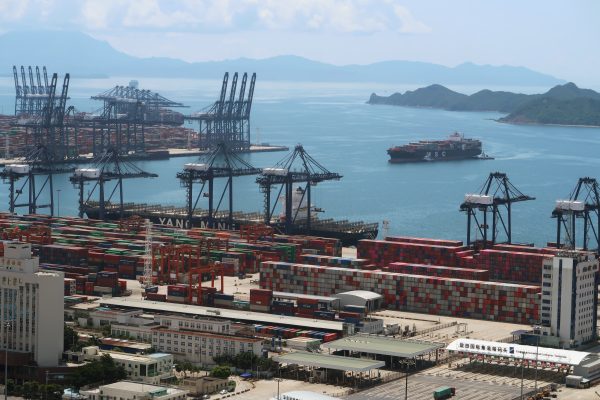Beijing is capitalising on the vacuum left by the abdication of US leadership in the Asia Pacific. Since pulling out of the Trans-Pacific Partnership (TPP) in 2017, Washington has lacked a coherent economic and trade strategy for the region. This has left the field open to China, which has benefitted from US disengagement and the Trump administration’s alienation of close allies. Despite US President Joe Biden’s commitment to international cooperation and rebuilding US alliances, his administration appears to have no plan to reverse the damage caused by his predecessor or reengage with Asia.
China has welcomed the opportunity to deepen its trade and investment ties with countries in the region. Last year, China and 14 other countries signed the Regional Comprehensive Economic Partnership (RCEP), a trade agreement covering nearly a third of the world’s population and economy.
The trade pact will reduce tariffs, harmonise and streamline customs procedures, and strengthen Asian supply chains. Its primary significance lies in replacing the patchwork of bilateral agreements with a common set of rules, including a unified rules of origin framework, making it an important step towards deepening regional economic integration.
The agreement is expected to generate $US209 billion in economic gains, with the majority of those accruing to its three largest participants — China, Japan and South Korea. The pact also represents the first free trade agreement among three states for which previous efforts to foster increased economic cooperation have been hampered by longstanding political tensions.
RCEP’s significance is also geopolitical because it signals China’s increasing centrality to global trade rulemaking. RCEP will serve as an important platform for future rulemaking, with China expected to exert growing influence over regional regulation and standard setting.
China has also applied to join the rival Comprehensive and Progressive Agreement for Trans-Pacific Partnership (CPTPP). The deal originated as the cornerstone of US economic strategy for containing China’s growing influence in the Asia Pacific, but when Washington withdrew from the Trans-Pacific Partnership (TPP) in 2017, its remaining members went ahead and created the CPTPP.
Replacing the United States in the CPTPP would be a significant symbolic and strategic victory for China. China is unlikely to meet the agreement’s high standards — particularly across labour, state-owned enterprises (SOEs), digital trade and government procurement — but its 11 existing members will likely come under pressure to support China’s accession. Participants may waive or water down some of its requirements through granting China long transition periods or exemptions from specific CPTPP provisions. Founding member Vietnam was granted exemptions from some of the SOE provisions.
For some CPTPP members, the prospect of boosting exports by expanding access to the massive Chinese market may be enough to support its membership. Singapore and Malaysia have already signalled their support for China’s membership bid.
Others, such as Japan and Australia, are far warier. A growing number of countries have been targets of China’s trade aggression, a problem that has generated concerns about deepening trade relations with China. In retaliation for Canada’s participation in the Huawei extradition case, China blocked $US4 billion worth of Canadian agricultural exports. China similarly blocked a lengthy list of Australian imports in retaliation for its calls for an independent inquiry into the origins of the COVID-19 pandemic.
In recent years, Beijing has used the threat and imposition of trade restrictions to punish over a dozen countries for perceived affronts — including Japan, South Korea, New Zealand, Norway, Sweden, the Philippines, Taiwan, Mongolia and the United Kingdom. China has weaponised trade as an instrument of economic coercion against weaker states — in violation of the core principle of the World Trade Organization that trade should be based on the rule of law rather than raw power.
While expanding CPTPP membership is important to broaden the agreement’s scope, its participants will need to be cautious when considering China’s membership bid. CPTPP participants need to be confident that new members will respect and abide by its rules, especially when China has resorted to aggressive unilateral trade actions and arbitrarily abused its market power when dealing with other states.
Many countries are coming to see deeper trade and investment ties with China as a double-edged sword. While such ties may bring short term commercial benefits, they may ultimately lead to greater vulnerability.
Kristen Hopewell is the Canada Research Chair in Global Policy at the University of British Columbia and the author of Clash of Powers: US–China Rivalry in Global Trade Governance.


“US President Joe Biden’s commitment to international cooperation… China has weaponised trade as an instrument of economic coercion against weaker states — in violation of the core principle of the World Trade Organization that trade should be based on the rule of law rather than raw power.”
It is pretty ironic to put these two sentences in one article. Didn’t the U.S. effectively strangle the WTO by refusing to allow the appointment of new judges to the WTO’s Appellate Body?
Also, didn’t the U.S. weaponise trade by starting the trade war, bypassing the WTO dispute resolution process?